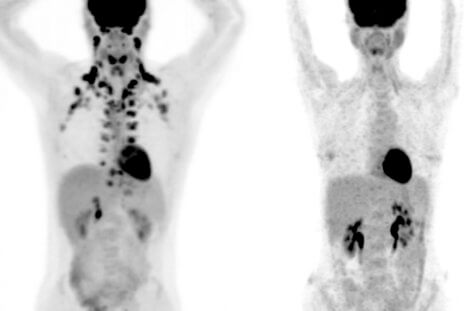NEW YORK — When you’re trying to lose weight, it may not seem like there’s such a thing as “good” fat. Despite this, scientists say brown fat is something everyone needs more of and it can even make you healthier. Aside from burning more energy, a new study reveals having brown fat makes it less likely someone will develop several conditions including diabetes and heart disease.
Researchers from Rockefeller University Hospital say brown fat is much different than the more common white fat. While white fat stores calories and makes up about 90 percent of the body’s fat cells, brown fat is key in energy consumption, fat burning, and generating heat. The one problem with studying the health benefits of brown fat is it can be hard to find. A reason for this is it’s buried deep inside the body and even gets mistaken for tumors.
The study of over 52,000 participants finds those who have detectable levels of brown fat in their bodies suffer from fewer health problems.
“For the first time, it reveals a link to lower risk of certain conditions,” says Paul Cohen, a senior attending physician at Rockefeller, in a media release. “These findings make us more confident about the potential of targeting brown fat for therapeutic benefit.”
What can brown do for you?
While scientists have been researching brown fat for decades in animals and infants, they discovered in 2009 that adults still have these cells as well. Typically, brown fat is located in the neck and shoulders. Unfortunately, researchers ran into a problem when it came to scanning for these cells using PET medical imaging.
“These scans are expensive, but more importantly, they use radiation,” says study first author Tobias Becher. “We don’t want to subject many healthy people to that.”

The team quickly realized there was an alternative nearby at the Memorial Sloan Kettering Cancer Center. There, patients undergoing evaluation for possible cancers regularly take PET scans. The scan easily detects brown fat and radiologists must make a note of it so doctors don’t mistake it as a cancerous mass.
Working with Heiko Schoder and Andreas Wibmer at Memorial Sloan Kettering, the study examined 130,000 PET scans. Those scans reveal nearly 10 percent of the more than 52,000 patients have brown fat tissue. The results find only 4.6 percent of patients with brown fat have type 2 diabetes. That number is 9.5 percent among people who do not have visible brown fat deposits.
Additionally, just 18.9 percent of patients with brown fat have abnormal cholesterol levels, compared to 22.2 percent of those without brown fat. Patients with brown fat tissue also have lower risk for high blood pressure, heart failure, and coronary artery disease. The results even point to brown fat negating some of the health impacts of obesity in overweight patients.
“It almost seems like they are protected from the harmful effects of white fat,” Cohen says.
Scientists exploring how to develop more brown fat
Study authors note the number of adults in the general population with brown fat is likely higher. This is because patients at Memorial Sloan Kettering are commonly advised to avoid the cold, exercising, and caffeine. Scientists are still looking for the reasons why brown fat is able to reduce the risks of these conditions. The study says there are some clues though.
Brown fat cells consume glucose as they burn calories. Researchers believe it’s possible this is lowering the blood glucose levels, which is a major determining factor for diabetes patients. There are fewer clues tying brown fat to hypertension, but it’s link to the hormonal system may hold the answer.
“We are considering the possibility that brown fat tissue does more than consume glucose and burn calories, and perhaps actually participates in hormonal signaling to other organs,” Cohen explains.
“The natural question that everybody has is, ‘What can I do to get more brown fat?'” he adds. “We don’t have a good answer to that yet, but it will be an exciting space for scientists to explore in the upcoming years.”
The study appears in the journal Nature Medicine.
